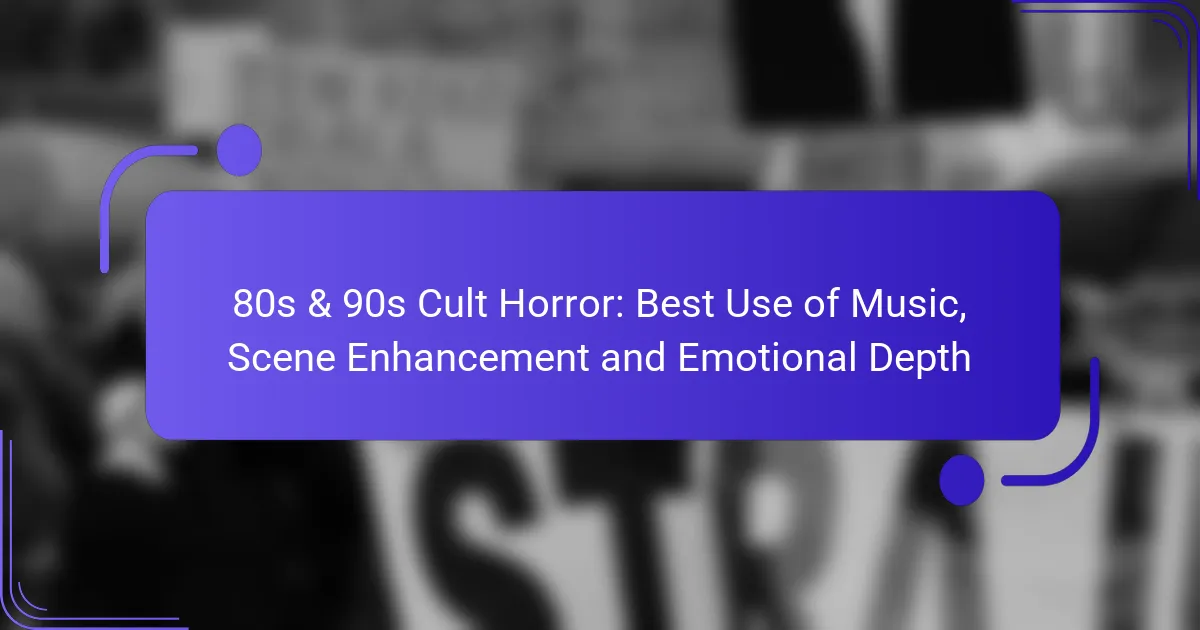The 80s and 90s cult horror films masterfully utilized music to enhance their emotional depth and scene impact. From chilling soundtracks to unforgettable pop hits, these films created an atmosphere that heightened tension and left lasting impressions on audiences. The strategic use of music not only amplified fear but also forged a deeper connection between viewers and the characters, making these films resonate long after the credits roll.
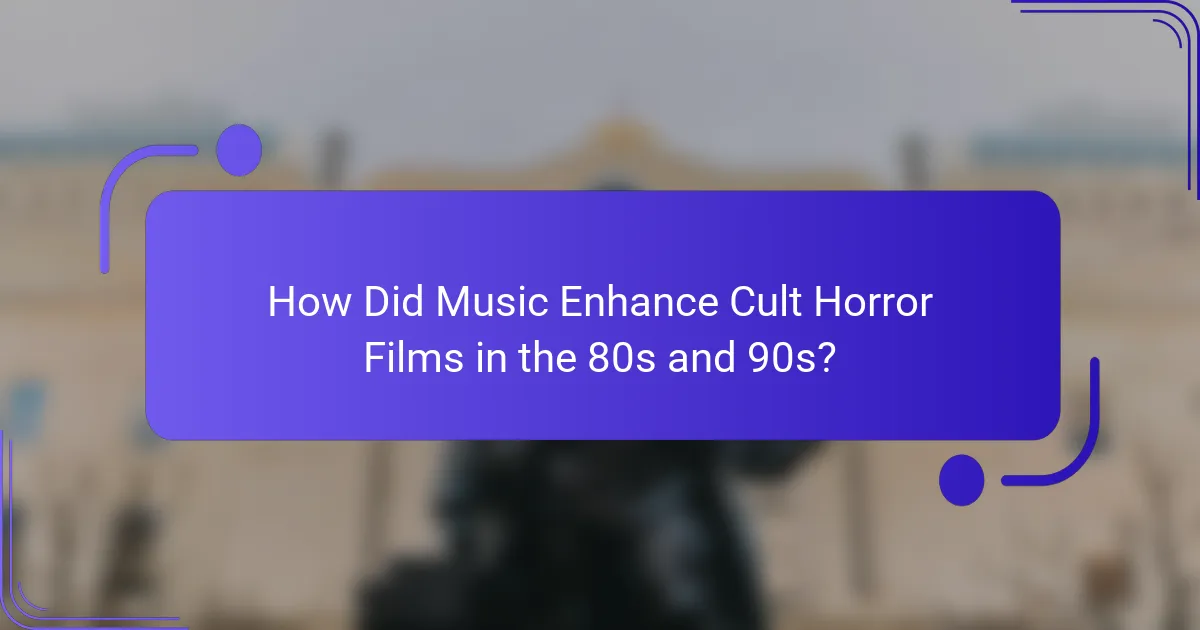
You can explore further insights on this topic at our homepage.
How Did Music Enhance Cult Horror Films in the 80s and 90s?
Music played a crucial role in enhancing the atmosphere and emotional depth of cult horror films in the 80s and 90s. From unsettling soundtracks to iconic pop songs, the right music amplified tension, evoked fear, and created memorable moments that resonate with audiences even today.
Iconic soundtracks in ‘The Shining’
The soundtrack of ‘The Shining’ is a masterclass in using music to enhance horror. Composed by Wendy Carlos and Rachel Elkind, the eerie synths and unsettling orchestral pieces create a sense of dread that permeates the film. The music’s dissonance mirrors the psychological unraveling of the characters, making the viewer feel the tension and isolation of the Overlook Hotel.
Key moments, such as Jack’s descent into madness, are punctuated by haunting melodies that linger long after the scenes have ended. This use of sound not only heightens the horror but also deepens the emotional impact of the narrative.
Use of synth music in ‘A Nightmare on Elm Street’
‘A Nightmare on Elm Street’ effectively employs synth music to establish a nightmarish atmosphere. Charles Bernstein’s score features pulsating synths that evoke a sense of urgency and fear, perfectly aligning with Freddy Krueger’s menacing presence. The music’s rhythmic patterns often mimic the heartbeat, drawing viewers into the characters’ terror.
The combination of synth sounds with unsettling sound effects creates a unique auditory experience that enhances the film’s dreamlike quality. This approach not only supports the horror elements but also reinforces the emotional stakes for the characters, making their struggles feel more immediate and relatable.
Impact of pop songs in ‘Scream’
‘Scream’ revolutionized the horror genre by incorporating contemporary pop songs that resonated with its audience. The use of tracks from artists like Radiohead and The Smashing Pumpkins provided a cultural context that connected with the youth of the 90s. These songs not only set the tone but also added layers of irony and commentary on the genre itself.
By juxtaposing upbeat pop melodies with scenes of violence, ‘Scream’ created a dissonance that heightened the shock value. This clever use of music not only entertained but also engaged viewers on a deeper level, making them reflect on the tropes of horror films while still delivering genuine scares.
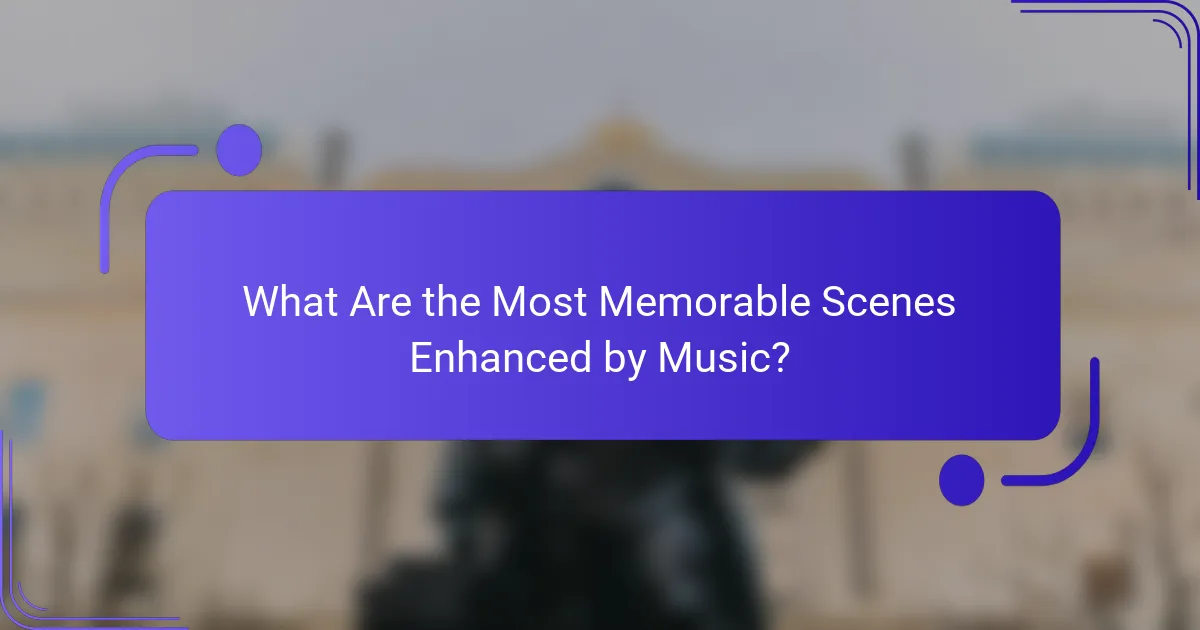
What Are the Most Memorable Scenes Enhanced by Music?
Music plays a crucial role in enhancing memorable scenes in cult horror films from the 80s and 90s. The right score can amplify tension, evoke emotions, and create lasting impressions on the audience.
Opening scene of ‘Halloween’
The opening scene of ‘Halloween’ is iconic, with its haunting score composed by John Carpenter. The minimalist piano theme sets a chilling tone, immediately immersing viewers in a sense of dread as they witness the perspective of a young Michael Myers. This use of music not only heightens suspense but also establishes the film’s eerie atmosphere.
As the camera glides through the house, the music builds tension, making the audience anticipate the horror that is about to unfold. The combination of visual and auditory elements creates a powerful emotional impact that resonates long after the credits roll.
Final showdown in ‘The Silence of the Lambs’
The final showdown in ‘The Silence of the Lambs’ features a masterful blend of silence and score that heightens the stakes. As Clarice Starling confronts Buffalo Bill, the sparse yet intense musical cues amplify the tension, making every moment feel critical. The music underscores her fear and determination, drawing viewers deeper into her psychological struggle.
This strategic use of music enhances the emotional depth of the scene, allowing the audience to feel Clarice’s anxiety and resolve. The interplay between sound and silence creates a gripping atmosphere that keeps viewers on the edge of their seats.
Climactic moments in ‘The Exorcist’
‘The Exorcist’ is renowned for its chilling score, particularly during its climactic moments. The unsettling music, combined with the visual horror of the possessed Regan, creates an atmosphere of pure terror. The score’s dissonant tones and eerie melodies evoke a sense of impending doom, making the scenes unforgettable.
As the tension escalates, the music crescendos, mirroring the characters’ desperation and fear. This effective use of sound not only enhances the horror but also deepens the emotional experience for the audience, leaving a lasting impression of dread and fascination.
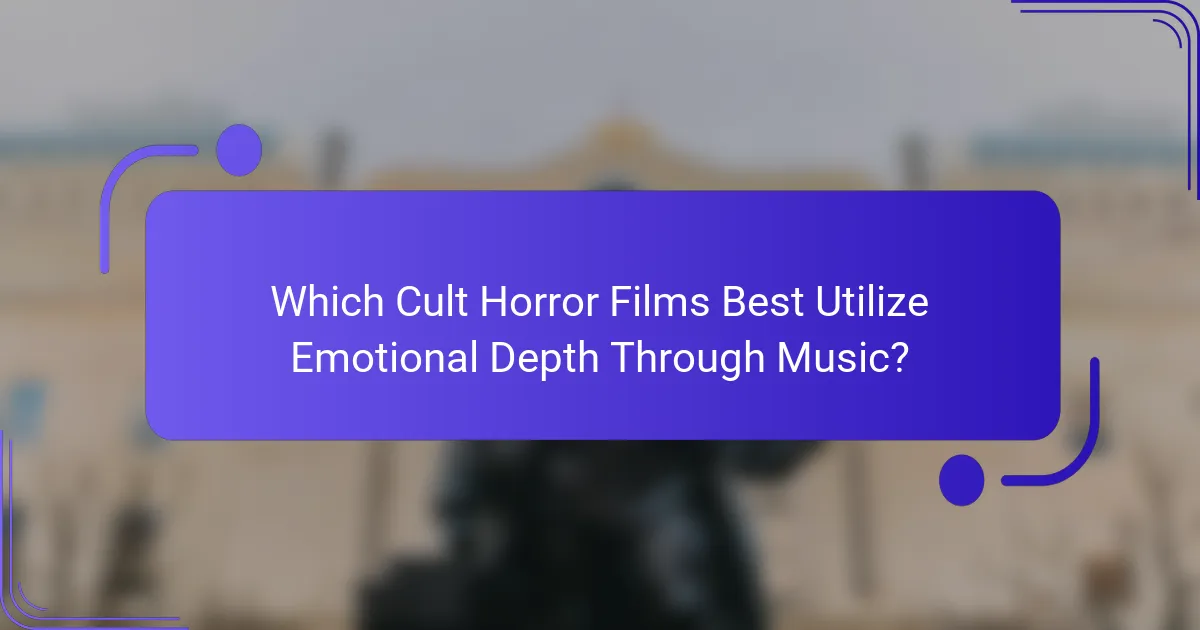
Which Cult Horror Films Best Utilize Emotional Depth Through Music?
Cult horror films often leverage music to enhance emotional depth, creating a powerful connection between the audience and the characters. The right score can amplify tension, evoke nostalgia, and deepen the viewer’s experience of fear and empathy.
You can explore more about this in cult horror movie soundtracks.
‘Pet Sematary’ and its haunting score
‘Pet Sematary’ features a chilling score by Elliot Goldenthal that underscores the film’s themes of loss and grief. The music complements the haunting visuals, creating an atmosphere that resonates with the audience’s emotions, particularly in scenes depicting the tragic consequences of resurrection.
The use of dissonant chords and eerie melodies enhances the film’s unsettling narrative, making viewers feel the weight of the characters’ decisions. Key moments, such as the death of a beloved pet, are amplified by the score, leaving a lasting emotional impact.
‘The Crow’ and emotional resonance
‘The Crow’ is renowned for its soundtrack, which blends rock and alternative music to reflect the protagonist’s pain and longing for revenge. Songs from artists like The Cure and Nine Inch Nails not only set the tone but also deepen the emotional resonance of pivotal scenes.
The music serves as a backdrop to the themes of love and loss, enhancing the viewer’s connection to the characters. The combination of visuals and sound creates a poignant experience that lingers long after the film ends.
‘Jacob’s Ladder’ and psychological themes
‘Jacob’s Ladder’ employs a haunting score by Maurice Jarre that mirrors the protagonist’s psychological turmoil. The music’s unsettling tones and rhythms reflect the character’s descent into madness, effectively immersing the audience in his nightmarish experiences.
This film’s score is integral to conveying its complex themes of trauma and existential dread. The disorienting sound design enhances the feeling of confusion and fear, making the emotional depth of the narrative more palpable for viewers.
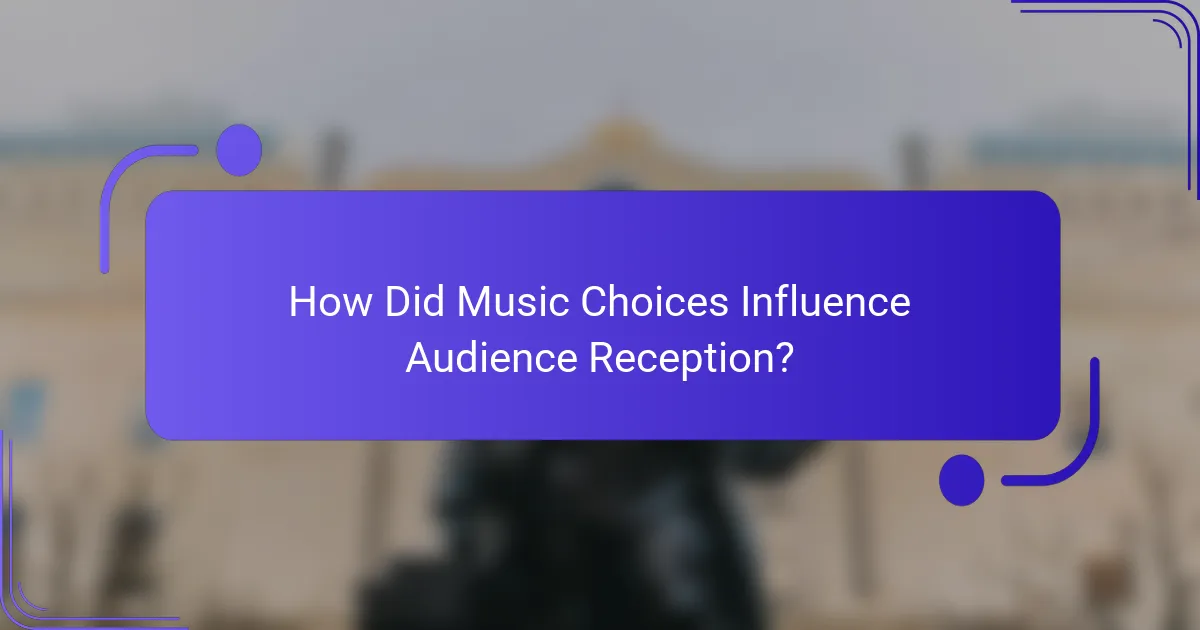
How Did Music Choices Influence Audience Reception?
Music choices significantly shaped audience reception by enhancing emotional engagement and creating memorable moments. Effective soundtracks can amplify tension, evoke nostalgia, and deepen the viewer’s connection to the film’s characters and themes.
Audience connection in ‘Evil Dead II’
‘Evil Dead II’ expertly uses music to forge a strong connection with its audience. The blend of eerie soundscapes and upbeat, quirky tracks mirrors the film’s unique mix of horror and humor, allowing viewers to feel both scared and entertained.
The iconic score by Joseph LoDuca heightens suspense during critical scenes, making the audience’s heart race. This duality in music fosters a memorable experience, encouraging viewers to revisit the film and share it with others.
Critical acclaim for ‘The Thing’
The haunting melodies and unsettling sound design contribute to the film’s legacy, making it a benchmark for future horror films. Critics often cite the score as a key factor in the film’s lasting impact on the genre.
Box office impact of ‘Friday the 13th’
The music in ‘Friday the 13th’ played a crucial role in its box office success. The iconic “ki-ki-ki, ma-ma-ma” theme became synonymous with the franchise, creating a recognizable auditory cue that drew audiences into theaters.
This memorable score not only enhanced the film’s suspense but also helped establish a brand identity for the series. The combination of effective music and marketing strategies contributed to the film’s impressive earnings, making it a staple in the horror genre.
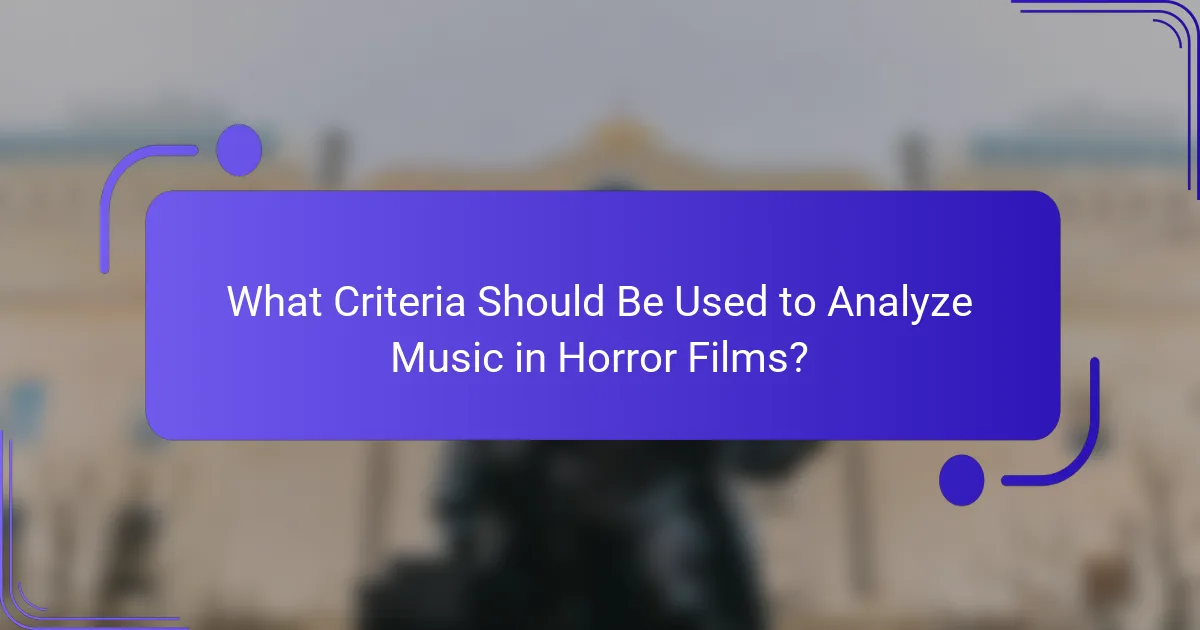
What Criteria Should Be Used to Analyze Music in Horror Films?
To analyze music in horror films, focus on its emotional impact, scene context, and historical relevance. These criteria help determine how effectively music enhances the storytelling and viewer experience.
Emotional impact assessment
Emotional impact assessment involves evaluating how music influences the audience’s feelings during key moments. Effective horror soundtracks often evoke fear, tension, or unease, making the viewer more susceptible to the film’s atmosphere.
Consider the use of dissonant chords or sudden shifts in tempo, which can heighten suspense. For example, the iconic score of “Halloween” uses a simple piano motif that builds anxiety through repetition and subtle variations.
Scene context evaluation
Scene context evaluation examines how well the music aligns with the visual elements and narrative progression. Music should complement the action on screen, enhancing the mood without overwhelming it.
For instance, in “The Shining,” the use of eerie, ambient sounds during the maze chase scene amplifies the sense of isolation and dread. Analyzing the timing of musical cues in relation to visual shocks can reveal how effectively the score contributes to the horror experience.
Historical relevance of soundtracks
Historical relevance of soundtracks looks at how music choices reflect the cultural and technological context of their time. Many 80s and 90s horror films utilized synthesizers, which became emblematic of the genre during that era.
For example, the use of synthesizers in “A Nightmare on Elm Street” not only set a chilling tone but also mirrored the technological advancements in music production of the time. Understanding these historical elements can deepen appreciation for the film’s artistic choices and their impact on the genre.
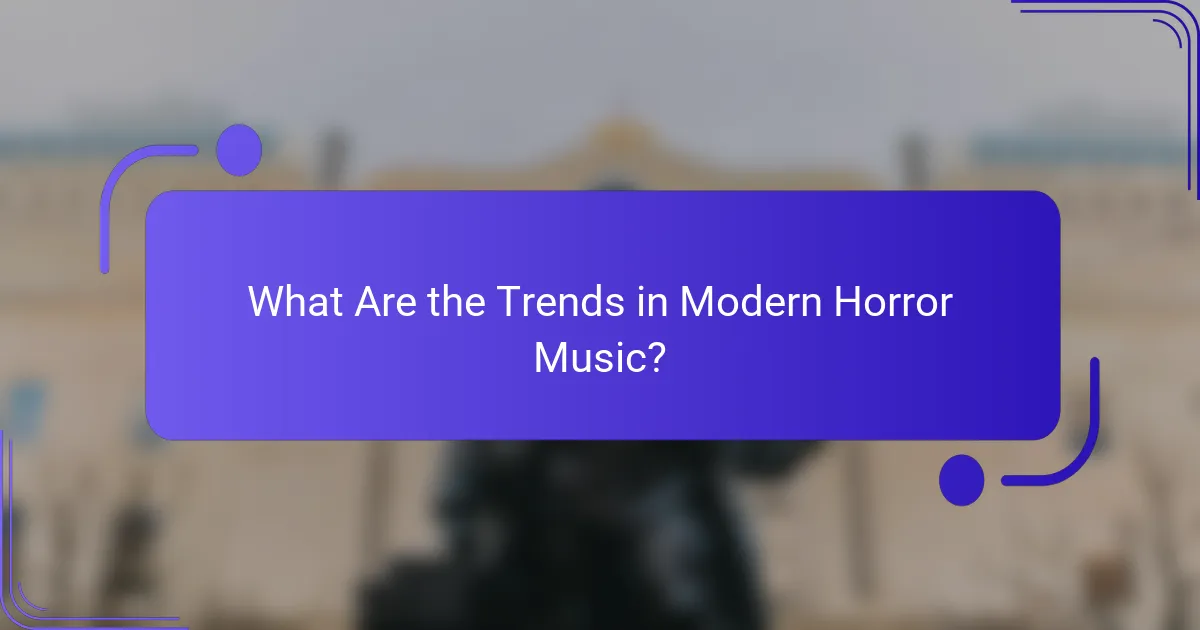
What Are the Trends in Modern Horror Music?
Modern horror music trends focus on blending nostalgic elements with innovative techniques to create immersive experiences. Filmmakers are increasingly using a combination of retro soundtracks and digital soundscapes to enhance emotional depth and scene impact.
Revival of retro soundtracks
The revival of retro soundtracks in modern horror films taps into the nostalgia of the 80s and 90s, often featuring synth-heavy compositions reminiscent of that era. This trend not only evokes a sense of familiarity but also heightens tension and atmosphere, making scenes more impactful.
Filmmakers often select tracks that resonate with audiences, using iconic sounds from the past to create a visceral connection. For instance, films like “It Follows” and “Stranger Things” effectively utilize retro scores to enhance their storytelling, drawing viewers into a haunting yet familiar soundscape.
Integration of digital soundscapes
Digital soundscapes have become essential in modern horror, allowing for the creation of unique auditory experiences that traditional instruments cannot achieve. These soundscapes often incorporate ambient noises, unsettling effects, and synthesized sounds to evoke fear and suspense.
When integrating digital soundscapes, filmmakers should focus on layering sounds to build tension gradually. For example, a low rumble might precede a sudden jolt in the narrative, enhancing the emotional response. Utilizing software like Pro Tools or Ableton Live can facilitate the mixing of these elements effectively.
